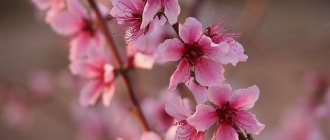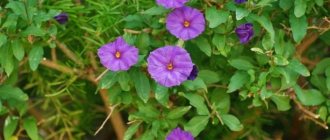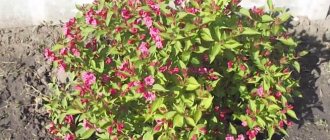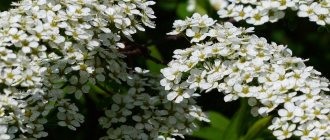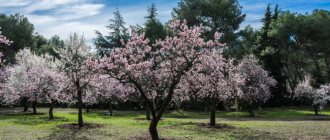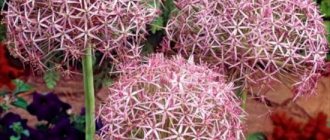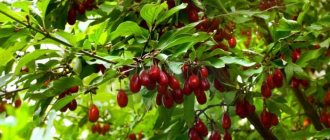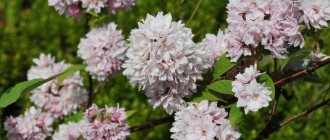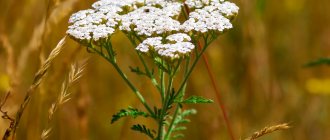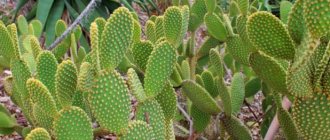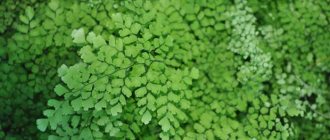Author: Natalya Category: Fruit and berry plants Published: July 10, 2016Republished: February 11, 2019Last edits: November 2, 2020
- Almond care
- When to prune
- Reproduction methods
- Varieties for the Moscow region
- Beneficial features
plant (Prunus dulcis) is a small tree or shrub of the Almond subgenus of the Plum genus of the Rosaceae family. The subgenus includes about 40 species of almonds, but common almonds are most often grown in culture. Although almonds are considered a nut, they are actually a stone fruit. The almond tree originates from the Mediterranean and Central Asia - it appeared in these areas long before our era. Today, in addition to Central Asia and the Mediterranean, almonds grow in California, China, Western Tien Shan, Crimea, the Caucasus, in the vineyards of Slovakia, the Czech Republic and South Moravia. The almond tree prefers gravelly and rocky slopes with calcium-rich soil at an altitude of 800 to 1600 m above sea level, although in Israel it grows much lower. Almonds are located in nature in small groups of 3-4 trees or bushes at a distance of 5 to 7 meters from each other.
Planting and caring for almonds
- Planting: early March or last days of September.
- Flowering: March or April, before the leaves appear.
- Lighting: bright sunlight.
- Soil: drained and breathable chernozems, loams, sandy soils with a high lime content and pH 7.7. Groundwater on the site should lie deep.
- Watering: regular: with one bucket of water when the soil dries in the tree trunk to a depth of 1-1.5 cm. Seedlings are watered more often than adult trees. If there are difficulties with water delivery during a season with normal precipitation, two abundant waterings per season are sufficient: spring and autumn moisture recharging.
- Top dressing: at the end of April or at the beginning of May, a solution of 20 g of ammonium nitrate in 10 liters of water is added to the tree trunk circle. In the fall, before digging, 1 kg of manure and 20 g of double superphosphate and potassium sulphide are added to the tree trunk circle.
- Pruning: in the spring, before the start of sap flow, and in the fall, after leaf fall, sanitary pruning is carried out. Formative pruning is done after flowering.
- Reproduction: by budding, shoots, layering, sometimes by seeds (seeds).
- Pests: spider mites, almond seed eaters, plum moths, aphids, plum sapwood bark beetles and leaf rollers.
- Diseases: cercospora blight, rust, moniliosis, gray mold (botrytis), scab, clasterosporiosis (hole spot).
Read more about growing almonds below.
Almonds, characteristics of the culture
Transcaucasia and the Mediterranean countries are considered its homeland. It was brought to Crimea from Turkey back in the 17th century. Almond is a shrub reaching a height of 3 meters. It begins to bloom even before the silver-green oblong leaves bloom. Flowering lasts more than four weeks. Flowers are 3-6 cm, simple, with five petals, or double, light or deep pink.
At least two or three copies should be placed on the site, because the plant is cross-pollinated. The powerful root system lies quite deep, so almonds easily tolerate drought and frosty winters. Placed on slopes, it inhibits landslide processes.
Almond fruits are green drupes covered with a thin, non-juicy layer. Beneath it is a hard bone. The seed in it is the very valuable almond “nut”.
Almonds usually begin to bear fruit at the age of five to six years. The productive life of a shrub can last up to 100 years.
Botanical description
The almond tree reaches a height of 4-6 m, and the almond bush 2-3 m. The almond rhizome has no more than five skeletal roots, which penetrate to a sufficient depth so that the plant does not suffer from drought. The shoots of this branching plant are of two types: shortened generative and elongated vegetative. Almond leaves are lanceolate, with a pointed tip, petiolate.
How do almond flowers bloom? Light pink or white almond flowers up to 2.5 cm in diameter consist of five petals. Almond blossoms begin in March or April - earlier than its leaves bloom. The almond fruit is a dry, velvety oval drupe with a leathery green pericarp, which, after drying, is easily separated from a stone 2.5 to 3.5 cm long, which has the same shape as the fruit, but is often dotted with grooves.
Almonds begin to bear fruit from four to five years, full fruiting occurs in the tenth to twelfth year, and the tree bears fruit from 30 to 50 years. With good care, an almond tree can last 50 to 80 years in your garden, and some specimens can live up to 130 years.
- How to prune old neglected gooseberries
There are two varieties of common almonds – bitter almonds, which grow in nature, and sweet almonds, grown in cultivation. Almond is a plant that requires cross-pollination, and in order for it to begin to bear fruit, at least three more pollinating almond varieties must grow in close proximity to it, the flowering period of which coincides. In addition to the wonderfully tasty fruits, the value of almonds is represented by its decorative qualities. Almonds are a wonderful honey plant that exudes a magical aroma during flowering. Since almonds are pollinated primarily by bees, they bear fruit best if there are 3-4 hives on or somewhere close to the plot.
The almond nut is a relative of such fruit trees as apple, pear, plum, apricot, cherry plum, peach, chokeberry, rowan, rose hip, hawthorn, quince and other cultivated representatives of the rose family. From our article you will learn how almonds grow in the conditions of the middle zone, how almonds are planted and cared for, what types of almonds exist, which varieties of almonds are more adapted to our climatic conditions, what are the benefits of almonds, and for whom and in what ways can the harm of almonds lies.
Features of decorative almonds
Almonds in the garden or the same Louiseania can grow up to 2.5-3 meters. As already mentioned a little above, almonds are often used for decoration. It begins to bloom only 4 or 5 years after planting in the ground. The flowers are double and simple. They look impressive due to the large number of petals and flowers, painted in pink or white tones.
Decorative almonds
Flowering duration is approximately 20 days. During such a period, the tree seems to be covered with flowers, like a cloud. Leaves usually appear after the flowering period. Decorative almonds bear fruit, but they are inedible, although they are just as attractive in appearance.
Some varieties are grown on a trunk, and they are very similar to the decorative almond tree. But the crown of such a shrub is shaped like a ball. The fruits look like a rounded pericarp with a suede surface and three lobes. There is a bone inside. It can be separated quite easily.
The almond bush is a relative of cherries, cherry plums, sweet cherries, peaches and some other trees that bear fruit. Decorative almonds do not require extremely careful treatment. Due to pollination by bees, it can produce quite a lot of honey. With proper care, it can live a hundred years or longer.
The difference from regular and decorative almonds is that the latter is more resistant to frost. The first variety is grown more often so that the fruits can be collected.
Planting almonds
When to plant
Almonds can be grown from seeds, and we will tell you about this in the section on plant propagation, but it is best to grow almonds from an annual seedling. Seedlings are planted in the ground in early spring - early March - or autumn, in the last days of November. They choose a sunny area for almond trees, although they grow well in partial shade, but the seedlings must be protected from drafts and strong winds.
The best soil for almonds is water- and breathable chernozems, sandy or loamy soils with a high lime content - optimal pH 7.7. Acidic, chloride or saline soils are unsuitable for growing almonds, as are areas with high groundwater levels.
Autumn planting
Almond seedlings planted in the fall take root much better than those planted in the spring. In the area allocated for almonds, two weeks before planting, holes are dug with a diameter of 50-70 cm and a depth of up to 60 cm at a distance of 3-4 m from each other in the row and 5.5-6.5 m between the rows. A layer of crushed stone or broken brick with sand is placed in each hole for drainage and mixed with fertile soil consisting of sand, humus and leaf soil in a ratio of 1:2:3, 5-6 kg of rotted manure and half a kilo of superphosphate are added. If the soil is acidic, you need to add dolomite flour or lime in the amount of 200-300 g. After two weeks, when the soil in the hole has settled, you can start planting almonds.
How to plant almonds? Planting an almond tree is not much different from planting a plum or apricot. Dig a support in the center of the hole - a pole of such a height that it rises half a meter above the level of the site. Place a mound of soil in the center of the hole. Dip the roots of the seedling into a clay mash with the thickness of store-bought sour cream and place the tree on a mound so that the root collar is slightly above the surface level. Fill the hole with fertile soil, compact it and water the tree with 10-15 liters of water. When the water is absorbed, tie the seedling to a support and mulch the tree trunk circle with a layer of peat or dry soil 3-5 cm thick so that the mulch does not come into contact with the root collar of the tree.
How to plant in spring
If for some reason you had to postpone planting almonds to the spring, you still need to dig holes for them in the fall. Lay a drainage layer of sand and crushed stone in them, add a layer of fertile soil mixed with fertilizers and leave the holes until spring. At the beginning of March, before the sap begins to ferment in the trees, almonds are planted in the same order as is done in the fall.
Growing almonds in the garden
Almond care
Planting and caring for almonds is carried out in accordance with the agricultural technology of the crop. You will have to perform procedures such as watering, loosening and weeding the tree trunk, pruning and feeding the plant, as well as prevention against diseases and pests. And if you do everything correctly, then you will reap a good harvest.
How to care for almonds? At the end of March, you need to make the first loosening of the tree trunk circle to a depth of 10-12 cm, and then during the growing season, carry out another 3-4 loosening to a depth of 8-10 cm. Keep the tree trunk circle clean, remove weeds in a timely manner.
Almonds are harvested when their outer green shell darkens and begins to separate easily from the kernel. The collected fruits are peeled and laid out in one layer to dry, after which they are stored in fabric bags.
Watering
Despite the fact that almonds are a drought-resistant crop, they grow and bear fruit better under conditions of timely and sufficient irrigation. Almonds growing in sandy soil need more frequent and abundant watering than those grown in clay and loamy soils. When you find that the soil under the almonds has dried to a depth of 1-1.5 cm, pour a bucket of water into the circle around the tree trunk. Overwatering can lead to rotting of the plant's root collar.
Seedlings need more frequent watering than mature trees: maintenance watering should be carried out once every 10-14 days.
How to grow almonds in the absence of water? If you do not have the opportunity to irrigate almonds during the entire growing season, carry out at least autumn and spring moisture-recharging watering of the plant.
- Fieldfare: growing in the garden, types and varieties
Top dressing
Almonds in the garden are in need of nitrogen, so at the end of April or beginning of May, 20 g of ammonium nitrate diluted in a bucket of water is added to the trunk circle of each adult tree. During the autumn digging of the site, 1 kg of manure and 20 g of potassium sulfide and double superphosphate are added to the trunk circle of each tree. It is advisable to grow green manure in the spaces between the rows of young plants for the first 5-7 years of life.
Treatment
Growing almonds requires preventive treatments of trees against pests and diseases. In order to destroy pathogens and harmful insects that have overwintered in the soil around the trunk and cracks in the tree bark, in early spring, before buds begin to open, treat almond trees with a one percent solution of Bordeaux mixture. And at the end of the growing season, after the end of leaf fall, spray the almonds in the fall with Bordeaux mixture or its analogues to destroy pests and pathogens that have settled in for the winter.
Almonds in Siberia
Despite the fact that almonds do not overwinter without shelter in the middle zone, there are frost-resistant plant species and varieties that are successfully cultivated not only in Vologda and St. Petersburg, but also in the forest-steppe and steppe parts of Siberia. Frost-resistant species include steppe almond, or low almond, or Russian almond, or bobovnik, or almond. This is a shrub up to 1.5 m high with brown or reddish-gray bark, lanceolate, leathery, shiny, serrated dark green leaves up to 8 cm long and up to 3 cm wide. Steppe almond is unpretentious, gas-smoke- and drought-resistant, completely undemanding to soil composition and easily propagated.
There are two garden forms of steppe almond: white-flowered and Gessler - with flowers of a bright pink hue. In spring, the flowering branches of steppe almonds amaze with their beauty. Based on the bean plant, breeders have developed such highly decorative varieties as Anyuta, Pink Flamingo, Mechta, White Sail, and Pink Fog.
The kernels of steppe almond fruits are edible and tasty. Another advantage of this species is that it quickly recovers even in cases where it freezes in the harsh snowless winter.
Almonds in Moscow and Moscow region
In the conditions of Moscow and the Moscow region, in addition to beans, three-lobed almonds grow well, which overwinter normally without shelter and quickly recover in case of slight freezing. The plant forms grafted onto a sloe rootstock turned out to be the most resistant in winter conditions near Moscow. Nevertheless, it is advisable to protect even trees of cold-resistant varieties from frost by covering their trunks with lutrasil. And in order to prevent the shoots from freezing, it is necessary to remove the apical buds at the end of July or the beginning of August - this procedure stimulates the rapid lignification of the shoots, after which the almonds will not be afraid of frost.
Collection and storage of fruits
Almond fruits ripen from about mid to late July. During the same period they begin to be collected. The fruits ripen unevenly, so harvesting takes place gradually. You can understand that the seeds are already ripe by the state of the pericarp. If it is cracked, you can start collecting.
Did you know? In Great Britain, a handful of 5 almond kernels is considered a symbol of happiness and prosperity.
Fruits are removed from plants by hand, clearing them of the pericarp. The seeds are laid out in a single layer on newspaper and dried for a week at room temperature. Store the harvest in linen bags or glass containers in a dry, well-ventilated area.
Thanks to advances in selection, today almonds can be grown not only in southern latitudes, but also in the middle zone, as well as in the northern regions. The most important thing is to follow the rules of agricultural technology and carry out preventive treatments against diseases/pests in a timely manner. This vegetation is not very demanding in care and quickly takes root in a new place.
Almond trimming
When to prune
Almonds need formative and sanitary pruning, and mature trees require a rejuvenating procedure. Sanitary pruning is carried out in early spring, before the sap begins to flow, and in the fall, when the almonds enter the dormant period, and formative pruning is done after the almonds bloom.
How to trim
An almond crown is formed like a plum, apricot, peach or nectarine - three tiers of skeletal branches are produced. Immediately after planting the seedling, it is pruned at a height of 120 cm, while the trunk of the tree is formed with a height of 50-70 cm.
When thinning fruit-bearing trees, thickening the crown and improperly growing branches are removed. When flower buds freeze, annual shoots are shortened.
Spring pruning
After winter, even before the buds begin to open, frozen annual growths of almonds are shortened, cutting them down to healthy tissue, and broken, diseased or deformed branches and shoots are removed. After the end of flowering, they begin formative pruning of the tree. A seedling planted in autumn or spring usually has at least three branches located at a distance of 15-20 cm from each other - they are shortened to 15-20 cm, and on the central conductor, over the next 2-3 years, new tiers of skeletal branches are laid, which should be one from the other at a distance of 20-30 cm.
Shoots that are unnecessary for crown formation are pinched out several times over the summer, and those that are needed are shortened no later than July, as soon as they reach 50-60 cm in length. In the second and third years of almond growth, unnecessary shoots are cut out and the rest are shortened. Upon completion of crown formation, the central conductor is cut so that the last skeletal branch of the almond tree is 55-60 cm below the conductor.
Trees that have entered fruiting with a formed crown almost do not need pruning, you just need to cut out fatty shoots into rings, and shorten broken shoots to 3-4 buds. Annual shoots that do not interfere with the proper development of branches do not need to be pruned.
Pruning in autumn
In the fall, after leaf fall, sanitary pruning of trees and shrubs is carried out: dry, broken, diseased shoots and branches that thicken the crown are pruned. If you have to cut or saw down a thick branch, do not forget to treat the cut with garden varnish, and if for some reason you did not have time to trim the almonds before the beginning of winter, reschedule the sanitary pruning until the spring.
Diseases and pests
The almond bush is susceptible to various diseases that need to be treated:
- gray rot - diseased branches need to be cut off after the bush has flowered;
- leaf curl - treat with Bordeaux mixture, first removing all damaged leaves;
- moniliosis (a fungal disease that affects young weakened shoots) - treatment is carried out in the same way, spraying should be repeated every 15-20 days, for prevention, pruning should be carried out annually after flowering;
- rust - treated by treating branches with a colloidal aqueous suspension of sulfur or powder.
The shrub is susceptible to attack by pests, including aphids, plum moths, and leaf rollers. To kill insects, it is recommended to spray with a prepared solution of chlorophos or karbofos.
Almond propagation
Reproduction methods
Under natural conditions, almonds reproduce by seed, but in culture they prefer propagation by budding, since growing a tree from a seed takes too much time. Nevertheless, you should know how to grow almonds from a seed, if only because in this way you can grow a rootstock for a varietal cutting. To grow rootstocks you will need bitter almond seeds, but if you can't get them, you can use sweet almond seeds. In addition to these two methods, if your almonds grow not as a tree, but as a bush, you resort to propagating the plant by shoots and layering.
- Japanese spirea: planting and care, description of varieties
Growing almonds from seeds
Sow seeds in spring or before winter. If you decide to sow almonds in the spring, you need to subject the seed material to stratification - place them in the vegetable drawer of the refrigerator for 3-4 months. Almond seeds are sown in furrows 8-10 cm deep at a distance of 10 cm from each other, keeping a distance of 45-60 cm between furrows. The seeds will germinate next year, in April, and you will need to water them, weed and loosen the area. In July, when the seedlings reach a height of 50-60 cm, the side branches on the trunks below 10-12 cm from the surface level should be cut into rings with pruning shears. During this period, the thickness of the seedling stem in the area of the root collar is approaching 1 cm, which means that the tree can already be used as a rootstock, but first it must be transplanted to a permanent place and allowed to take root.
Almond grafting
Almond propagation is also carried out by budding. Not only almond seedlings are used as rootstocks, but also plums, cherry plums and sloe. It is better to carry out the procedure at the height of sap flow - in mid-April or at the end of August, in the cool time of the day - at 16:00 or early in the morning. Two days before the procedure, the rootstock is watered abundantly so that during budding the bark is well separated from the wood. For the scion, developed straight shoots with formed vegetative buds are selected. To prevent the scion from losing moisture, all leaves are removed from it, leaving only petioles no more than 1 cm long.
The bole at the grafting site is wiped clean of dust, then a T-shaped incision is made in the area of the root collar with a sharp knife and the bark is carefully folded back at the point where the perpendicular lines converge. A shield with a bud is cut from the scion of such length that it fits into the cut on the rootstock. When you cut the shield, use a budding knife to grab, in addition to the bark, a thin layer of wood and, trying not to touch it with your hands, insert the shield into a T-shaped cut on the rootstock, press the bark tightly against it and secure the grafting site by wrapping it with adhesive tape or plaster, but so as not to cover the kidney itself.
If after 2-3 weeks the rest of the petiole falls off and the eye is green, it means that the budding was successful and the patch can be loosened. If you carried out budding at the end of summer, then the fixing bandage should not be removed until next spring, and it is better to cover the root collar with the graft with earth. In the spring, when you are sure that the bud has taken root, free the root collar from the ground, and the grafting site from the plaster or tape, then cut the rootstock just above the grafting site, and if it is windy in the spring, then the cut should be made 10-12 cm above the grafted kidneys When shoots begin to appear from dormant buds below the budding site, they should be removed immediately, not allowing them to become lignified.
Reproduction by shoots and layering
Almonds growing as a bush after pruning, as a rule, form shoots. In the second year, when the roots of the shoots become strong, the offspring are dug up and transplanted to a permanent place.
If you decide to try propagation by layering, choose flexible shoots for this, lay them on the ground, secure them in several places with wire pins and cover them with a layer of earth about 20 cm thick. The roots of the layering take a long time to form, and all this time you must water the layer and loosen it around soil and remove weeds. After about a year or a little more, when the cuttings have formed a strong root system, they are separated from the mother plant, dug up and planted.
Almond diseases and their treatment
Almond diseases affect the plant in cases where the agricultural technology of the crop is violated or it is weakened by improper or untimely care. Most often, almonds suffer from scab, cercospora blight, rust, moniliosis, gray rot and clasterosporiosis.
Cercospora blight - This fungal disease most often affects almond leaves, but if the disease progresses, the petioles and shoots of the plant may also be affected. The first signs of the disease can be detected in June - round red-brown spots with a diameter of 2 to 4 mm appear on the leaves, and in conditions of high humidity a grayish coating forms on them. Over time, the leaf tissue in the center of the spots dries out and falls out, the plant has to grow new leaves, which consumes a lot of energy, and this negatively affects the development of the fruits. To combat the disease, as soon as its first symptoms are detected, almonds are treated with fungicides.
Scab - this disease affects not only the leaves, but also the flowers and shoots of almonds. As preventive measures against scab, one can consider growing disease-resistant plant varieties, digging up the area after leaf fall, preventative spring and autumn treatment of almonds with Bordeaux mixture, timely pruning and burning of diseased shoots and branches. Preparations from the fungicide category cope well with scab, as well as with other fungal diseases.
Rust - this disease manifests itself as small red spots on the upper side of the leaf blade, and brownish pads form on the underside of the leaves. The spots grow and merge, causing the leaves to dry out and fall prematurely. To combat rust, almonds are treated with an aqueous colloidal suspension of sulfur. As a preventive measure, it is necessary to remove plant debris from the site in the fall and dig up the soil.
Moniliosis - the causative agent of this disease penetrates through the pistil of a flower and affects young shoots, leaves and flowers of almonds. You can get rid of moniliosis by timely treating almonds with fungicides - for example, Horus.
Clusterosporiosis, or hole spot, affects all stone fruit crops. Almonds are no exception. Warm, rainy weather contributes to the appearance and rapid development of the disease. The disease affects leaves, flowers, shoots and fruits, but typical signs of clasterosporiasis appear primarily on almond leaves - small spots of red-brown, crimson or red-violet hue. They gradually increase in size, merge, and the tissue in their center dies, becomes lighter and falls out. A distinctive feature of the disease is a clearly defined dark border around the spots, which makes it possible not to confuse kleasterosporiosis with other diseases. With severe damage, gum begins to flow from the bark of damaged shoots.
To combat the disease, almonds are treated with Horus, Kuproxat, Skor, Topaz or Vectra, spraying the plant the first time at the beginning of flowering, the second time after flowering, then two weeks after the second treatment.
Gray rot, or botrytis, is manifested by the formation of brown spots on leaves and shoots that quickly increase in size. In conditions of high air humidity, the plant is covered with a gray fluffy coating consisting of fungal spores. This plaque is carried by the wind, and gray rot infects neighboring plants. To combat this fungal disease, fungicides such as Topaz, Champion, Kuproksat, Oxychom are used.
To avoid infection with gray mold, try not to create too dense plantings and avoid contacting the leaves with fertilizers with a high concentration of nitrogen. When symptoms of the disease appear, it is necessary to cut out the affected areas, and then treat the almonds with one of the indicated drugs. You can coat the affected areas by diluting 30-40 g of Rovral fungicide and 300-400 g of CMC glue in a bucket of water.
Features of outdoor care
Plant care includes the usual procedures typical for all fruit trees.
Thus, it is necessary to water the plant in a timely manner, loosen it, fertilize it, and do not delay pruning.
Preventive measures to prevent the occurrence of diseases and pests are also considered important in tree care.
Feeding and watering
To get more fruits, it is recommended to water the plant regularly. Young seedlings need to be watered once every 14 days.
Mature plants are watered much less frequently. Approximately, each tree can be watered every 20 days. In this case, you need to focus on weather conditions.
During prolonged drought, watering can be increased, and during rainy periods - reduced.
An important point is also loosening the soil around the tree. It is necessary for the active development of the plant.
It is recommended to carry out the first loosening to a depth of 10 cm in March. Then, during the growing season, they are loosened to a depth of 6-8 cm. At the same time, it is important not to forget to get rid of weeds in a timely manner.
Note! Almonds love feeding very much. Fertilizer must be applied from the second year of seedling growth. In spring you can fertilize with ammonium nitrate or urea. In the fall, dig up superphosphate, potassium sulphide and rotted manure near the trunk.
Almond trimming
Almond trees should be pruned before the buds begin to open. At this time, remove all dried, deformed and frozen branches.
Formative pruning is carried out after flowering. In this case, you need to remove 3 poisons from skeletal branches:
- In the first year of development, 3 branches are selected. They should be 15cm apart. These branches need to be cut to a length of 15 cm.
- Over the course of 2 and 3 years, 3 tiers are formed at a distance of 20-30 cm.
- Shoots that are considered insignificant for the crown are pinched. You need to do this all summer.
- The remaining shoots are cut to 50 cm.
- At the end, the central conductor needs to be shortened. This should be done in such a way that there is a distance of 60 m between it and the upper tier.
Rejuvenating and sanitary pruning is carried out in the fall. All branches that thicken the tree are removed. Broken and damaged branches are also trimmed.
It is worth remembering that when pruning thick branches, the cut site must be treated with garden varnish.
How almond blossoms
According to some sources, almonds are translated from ancient Greek as “beautiful tree.” And this is indeed true. The almond blossoms are simply impressive.
At this time, a huge number of flowers form on the tree or shrub, which simply “stick around” the entire plant. The color of the flowers is white, pink, purple or red.
In regions with warm climates, almonds bloom starting in January. In mid-latitudes you can admire the most beautiful blooms in April-May.
Because of this amazing appearance, almonds are often planted for decorative purposes.
Diseases and pests
The almond plant may suffer from the following diseases:
- Scab – leaves, shoots and flowers suffer from a fungal disease;
- Rust - it can be distinguished by red spots on the leaves, which eventually dry out and fall off;
- Gray rot - you can recognize the disease by a gray coating and brown spots on the shoots;
- Cercospora blight – brown spots form on the leaves, and over time the center of the leaf dries out.
In any case, at the first signs of the disease, it is necessary to tear off all affected shoots, leaves, and burn them.
It is better to treat plants with fungicides. To do this, you need to choose dry, windless, cloudy weather. The best preparations, according to reviews from experienced gardeners, are:
- Topaz;
- Champion;
- Oksikhom.
Most often, almonds suffer from aphids, leaf rollers or spider mites. The following drugs will help get rid of uninvited guests: Tagore, Fufanon or Fitoverm.
Experienced gardeners recommend paying special attention to preventive measures. It is much more difficult to cure a plant already affected by disease or pests.
Prevention includes the following measures:
- Before buds appear in the spring, trees need to be treated with a 1% solution of Bordeaux mixture.
- Repeated treatment should be done after the leaves fall.
- Proper care is the most important thing in growing any plant. That is why you need to regularly water, loosen the soil, get rid of weeds, and trim on time.
Please note that you can remove the almonds when the shell becomes darker. At this time, it should easily separate from the core.
The almonds are removed only after the green outer shell has darkened and can be easily separated from the kernel.
Almond pests and their control
Of the insect pests, almonds suffer most from spider mites, almond seed eaters, aphids and leaf rollers.
The almond seed eater spends the winter in damaged almond fruits, which is why it is so important to remove plant debris from the tree and from the tree trunk in the fall. Carrying out preventive work (spraying trees with one percent Bordeaux mixture in spring and autumn) can also reduce the risk of almond nuts being damaged by the seed eater. To ensure plant protection, apply another treatment to the almonds immediately after flowering.
The leaf roller, or rather its caterpillar, feeds on leaves, while folding them. As a preventive measure, you need to cut and destroy the clutches of the leaf roller butterfly and the leaves rolled up by the caterpillars, and in early spring, when the temperature in the garden rises above 4 ºC, treat the trees with Bordeaux mixture or the drug Profilaktin, dissolving half a liter of the drug in 10 liters of water. If the caterpillars have multiplied, you will have to resort to treating the almonds with insecticides such as Actellik, Calypso, Fufanon, Ditox, Tagore, Zolon and other similar preparations.
Aphids are a ubiquitous and very dangerous pest that feed on the cell sap of almond leaves and young shoots and carry incurable viral diseases. The fight against it must be merciless, especially since it can produce nine generations in one season. As a preventive measure, you can plant umbrella plants near the almonds - dill, fennel - which will attract aphid-eaters, hoverflies, to your garden. It is better to destroy aphids using folk remedies - infusion of wormwood, tansy, tobacco dust, hot pepper, garlic, onions, dandelions, tomato tops and potatoes. To defeat the pest, 3-4 treatments will be required. Of the insecticides, Biotlin and Antitlin work well against aphids.
Spider mites settle on almonds during periods of drought. It multiplies quickly, its population lives in a thin web woven by ticks. This pest, like aphids, feeds on the cell sap of leaves and young shoots. As a result of the activity of spider mites, the plant weakens and can be affected by any diseases, including those carried by spider mites. It is useless to use insecticides against ticks, since they are arachnids, so the fight should be carried out with acaricides (Apollo, Omite, Flumite) or insectoacaricides (Agravertin, Akarin, Kleschevit, Fitoverm).
Almond varieties
Sweet varieties of common almonds are divided into hard-shell, from which the shell is removed with tongs, and soft-shell, from which the skin is removed by hand. We offer you several well-proven varieties, among which you can choose almonds for your garden:
- Yubileiny is a late-flowering, drought-resistant variety with a medium-thick shell and a dense, sweet, dry kernel;
- Ayudagsky is a late-ripening, early-fruiting, productive variety that begins to bear fruit in the third or fourth year after planting. The variety is soft-shelled, the kernel is flat-oval, dense and sweet, light brown in color;
- Sevastopolsky is a heat-resistant and drought-resistant late-ripening variety of very high productivity with a soft shell and dense, sweet white kernels;
- Mangup is a drought-resistant late-ripening variety, rarely damaged by pests and diseases, with a soft shell and hard, dense, sweet, oily kernels;
- Fragrant – a late-flowering variety with a hard shell and aromatic, dense and oily kernels of excellent taste;
- Dessert is a self-sterile variety, resistant to frost-resistant flower buds, with a rough soft shell and oval sweet kernels with an oily taste. The Primorsky and Pryany varieties are suitable as pollinators;
- Primorsky is a productive, self-sterile variety with a fan-shaped crown, a stable dormant period, and elongated, oily fruits. Dessertny and Alenik varieties are suitable as pollinators.
In addition to those described, the varieties Yaltinsky, Nikitsky 62, Bumazhnoskorlupny, Rims, Nikitsky late-flowering, Nessebar, Dabkov, as well as the Californian varieties Nonpareil, Nek plus ultra, Carmel, Padre, Mission, Monterey and Sonora are in demand in cultivation.
Varieties for the Moscow region
As we have already written, it is problematic to grow any of the varieties of common almonds in the conditions of the Moscow region - this is due to cold winters, after which the plant may not recover. Therefore, it is better to grow steppe almonds, or the so-called bean almonds, in the Moscow region, the decorative value of which is beyond praise, and the nuts are almost as good in taste as sweet almonds.
Properties of almonds - harm and benefit
Beneficial features
What are the benefits of almonds? Almond kernels contain up to 67% fatty oil. Almonds are one of the world's best plant-based sources of protein: they contain as much protein as lean meat - up to 30% - and are high-quality, almost completely absorbable protein. In addition, almonds contain calcium, magnesium, phosphorus and manganese, sugars, enzymes, a powerful antioxidant vitamin E and B vitamins.
Almonds have an effect on blood lipids, cleanse internal organs of waste and toxins, stimulate mental activity, improve vision, and increase sperm production in men. It is recommended for patients with asthma and pleurisy, and is indicated for ulcers and abrasions in the intestines and bladder. Italian scientists have experimentally proven that regular consumption of almonds increases the body's resistance to viral infections.
The skin of almond kernels contains ten times more antioxidants than the kernels themselves. And, by the way, it is used to color wines and make brandy.
In folk medicine, almonds with sugar are used to treat anemia, anemia, insomnia and cough. Almond kernels have analgesic, anticonvulsant, enveloping and softening effects.
Despite its calorie content, almonds, when consumed correctly, promote weight loss, since some of the fatty acids contained in them are excreted from the body before they have time to be absorbed. Eating no more than 30 grams of raw (not roasted or salted) nuts per day will help you reduce lipids, normalize cholesterol levels and lose weight.
Almond oil is a valuable product. It is used for pneumonia, asthma, otitis, stomatitis, heart and kidney diseases. It has a beneficial effect on the skin, eliminating irritation, moisturizing it and giving it elasticity. Almond oil is one of the best remedies for strengthening hair, stimulating its growth and giving it shine and elasticity. It is quickly absorbed and activates the regeneration process of body cells, so it is used as a base for various ointments and creams.
Contraindications
For some people, almonds can be a strong allergen. Obese patients should limit their consumption of almonds due to their high calorie content.
Unripe kernels can be dangerous, since the cyanide they contain causes poisoning. You need to be careful when handling spoiled or expired kernels - they can be poisonous. Do not give almonds to small children because the nut kernel may be inhaled.
